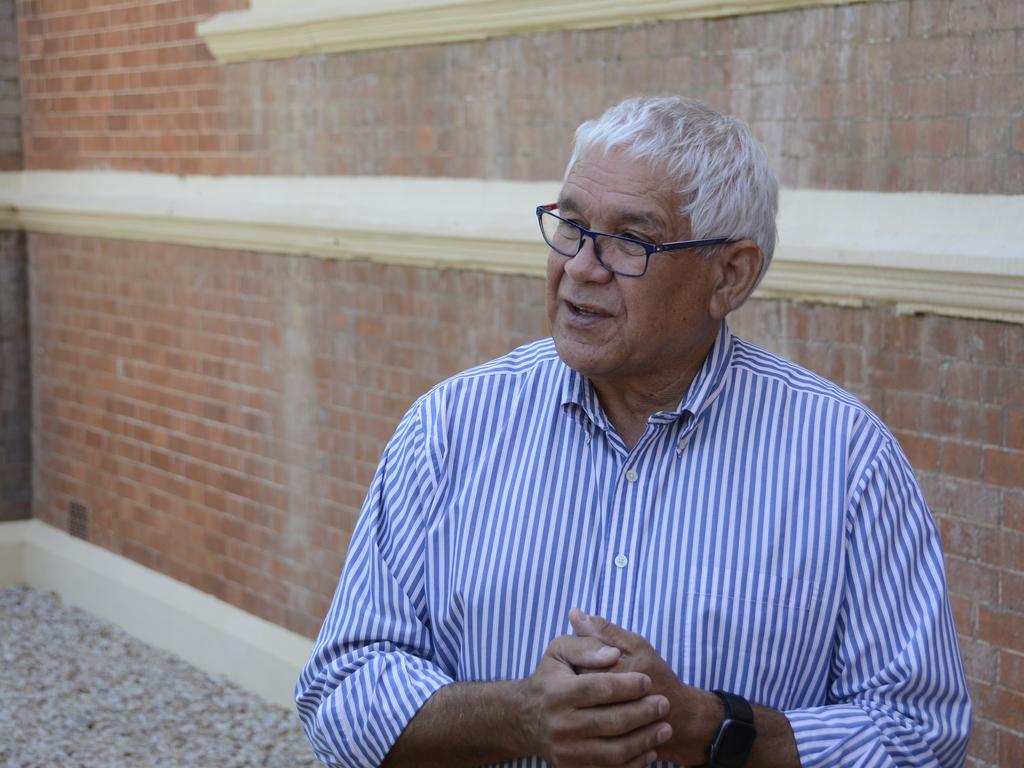Domestic violence targets to be dropped from Closing the Gap agreement
The final Closing the Gap agreement drops a proposal to halve the proportion of Indigenous women who have been victims.

A proposal to halve the proportion of Indigenous women and girls who have been victims of violence has been dropped from the final Closing the Gap agreement.
Documents obtained by The Australian, which detail discussions about the last-minute changes to the plan, also show more aggressive targets about reducing the number of Indigenous adults in detention.
The final version of the agreement, which is to be discussed by national cabinet on Friday and expected to be signed-off next week, has dropped a proposal that would have meant Indigenous and non-Indigenous rates of incarceration would hit parity by 2093.
Instead, the final agreement will task the Australian Institute of Health and Welfare with modelling how to reach parity by 2060, in line with the youth incarceration target.
Indigenous Australians Minister Ken Wyatt distanced himself from the 2093 date earlier this month, one day after The Australian revealed details of the draft Closing the Gap agreement, a major reform aimed at reducing disadvantage among Aboriginal and Torres Strait Islander people.
As The Australian reported on July 2, the draft agreement set new targets of 15 per cent fewer indigenous adults in prisons by 2031 compared with an earlier goal of a 5 per cent reduction by 2028.
The final agreement, according to new documents, shows a number of changes have been made to the plan during negotiations between states, territories and other parties, collectively known as the Joint Council.
One key change is the removal of a target to reduce by 50 per cent the proportion of Indigenous women and girls aged 15 and over who had experienced violence in the previous 12 months by 2031. Instead, the new Closing the Gap agreement calls for a “significant and sustained reduction”. It does not include a specific figure.
States will have 12 months to submit implementation plans to the Joint Council.
Mr Wyatt declined to comment on Thursday, but following the disclosure of the forecast 2093 date for parity between Indigenous and non-Indigenous adult incarceration rates, he said he wanted the final deal to “achieve these outcomes much sooner”.
Others, including UNSW law academic Megan Davis, a key figure in the design of the Uluru Statement from the Heart, described that forecast as “profoundly despairing”.
Discussions about the agreement, including incarceration reduction targets, have coincided with increasing concerns over the high numbers of Indigenous people in prison.
In Western Australia, more than 4 per cent of the Indigenous adult population is in jail, according to Australian Bureau of Statistics figures this year.
Nationally, 0.2 per cent of all Australian adults were in jail.
Mr Wyatt has previously noted that “underlying factors that lead to offending” had to be addressed before any incarceration target could be met.
Other changes agreed to in the final Closing the Gap agreement include adding justice to four policy priority areas, which in the draft included social and emotional wellbeing, housing, early childcare and development and Aboriginal and Torres Strait Islander languages.
The final agreement will also alter a target to reduce youth incarceration from 30 per cent to “at least” 30 per cent.
Overhauling the Closing the Gap agreement has been Mr Wyatt’s most significant task since the last election. The program was introduced by the Rudd government to set and monitor targets to reduce Indigenous disadvantage in areas including early childhood education, Year 12 attainment, child mortality, employment and life expectancy.
Yet after 11 annual reports, just two of the seven Closing the Gap targets set in 2008 — early childhood education and Year 12 attainment — have been achieved.
As The Australian reported on July 2, the draft agreement proposed to hand over unprecedented power, responsibility and funding to Indigenous organisations, empowering them to take a greater role in decision-making and service delivery in communities. “This agreement also stems from the belief that when Aboriginal and Torres Strait Islander people have a genuine say in the design and delivery of services that affect them, better life outcomes are achieved,” the draft document read.
The agreement’s rollout will be overseen and managed by the Joint Council, co-chaired by Mr Wyatt and Pat Turner, who is the convener of a coalition of 50 Aboriginal and Torres Strait Islander organisations.
Former Indigenous Advisory Council chairman Warren Mundine, in an essay published earlier this month by the Centre for Independent Studies, has argued against “blatant” incarceration reduction targets.
“It will see pressure on courts to impose reduced or non-custodial penalties on Indigenous offenders; and pressure on police and prosecutors not to bring charges, even when justified by the severity of the offence,” he wrote. “Indigenous crime mostly impacts Indigenous victims.
“Most Indigenous prisoners are incarcerated for offences that involve violence, with just under half for homicide, acts intended to cause injury or sexual assault.”
Mr Mundine said the criminal justice system should be corrected if it treated Indigenous people more harshly than non-Indigenous people, but the high incarceration rate largely came down to “the high level of violent offences; and reoffending (with more Indigenous prisoners having prior convictions)”.
“Both these factors lead to higher sentences and more prison time,” he wrote. “And that means more deaths in custody.”
The draft agreement includes higher tertiary qualification (Certificate III or higher) goals — 70 per cent of all Aboriginal and Torres Strait Islander youth by 2028 compared with earlier targets of 47 per cent.
It also includes targets for appropriate housing, the amount of land owned by Aboriginal and Torres Strait Islander people and childhood development.








To join the conversation, please log in. Don't have an account? Register
Join the conversation, you are commenting as Logout